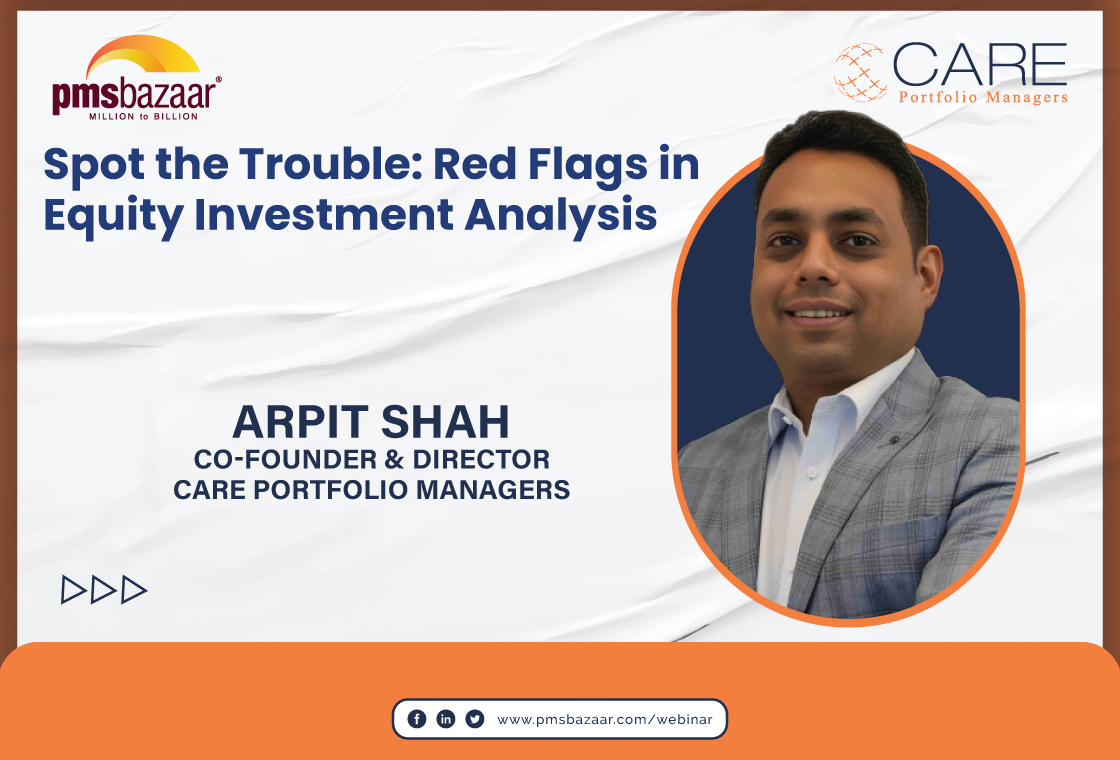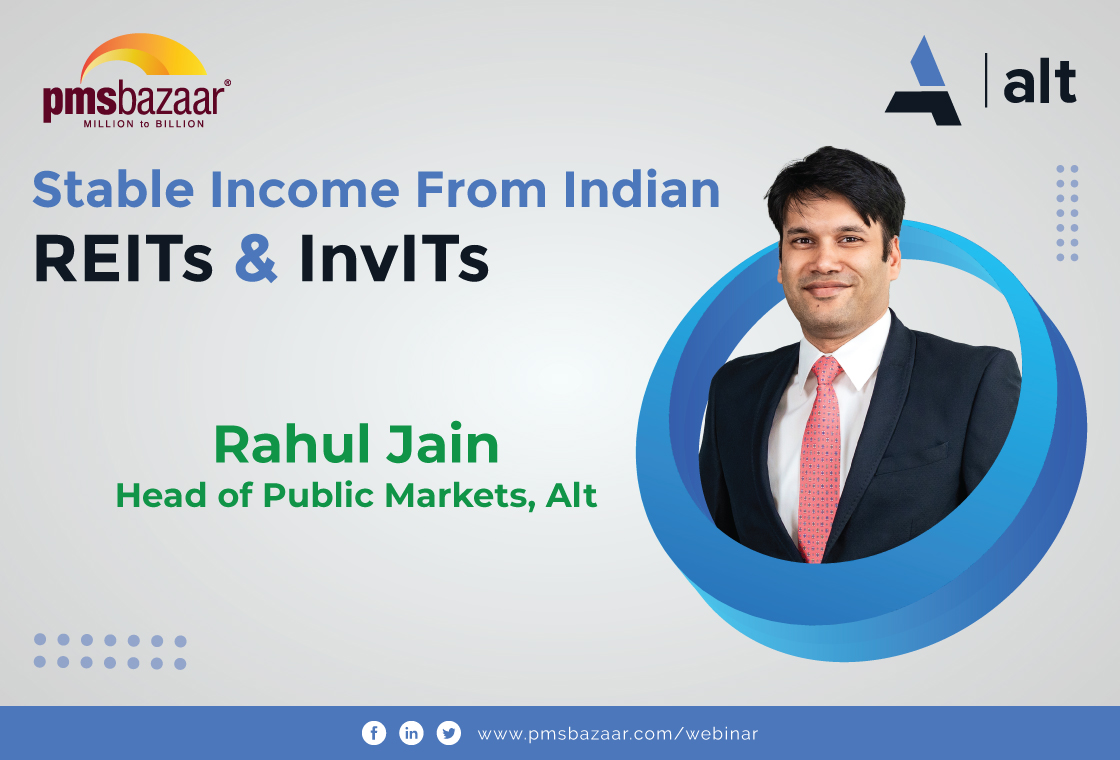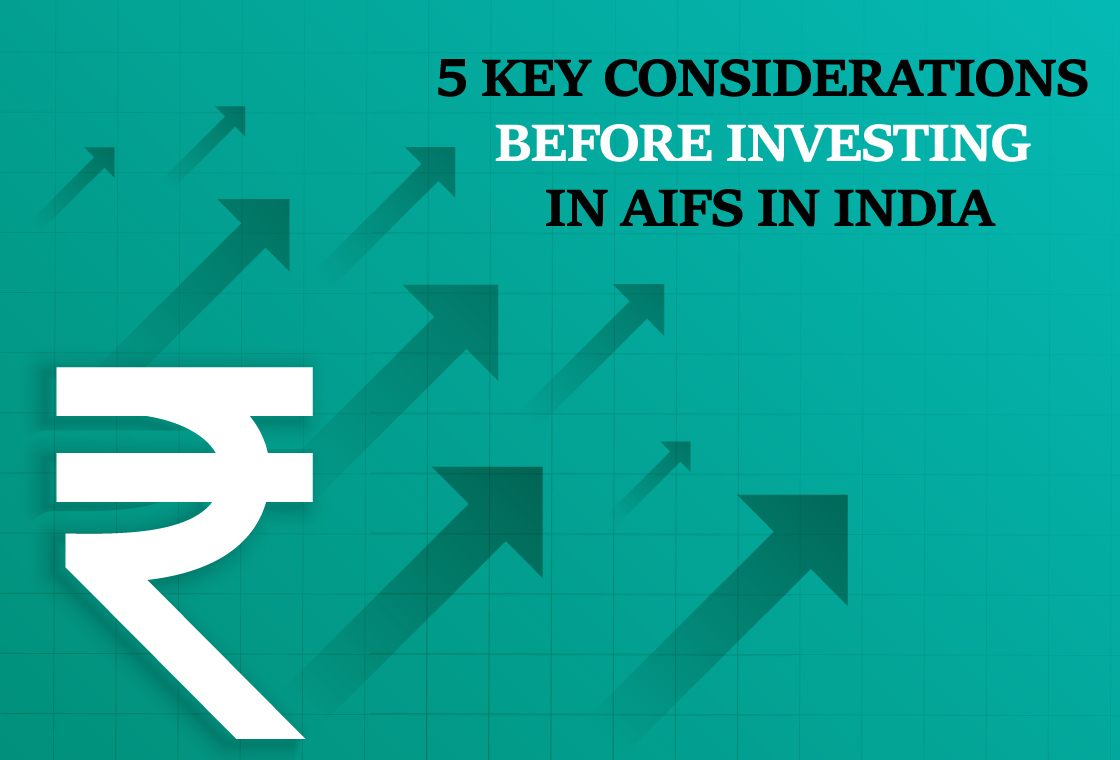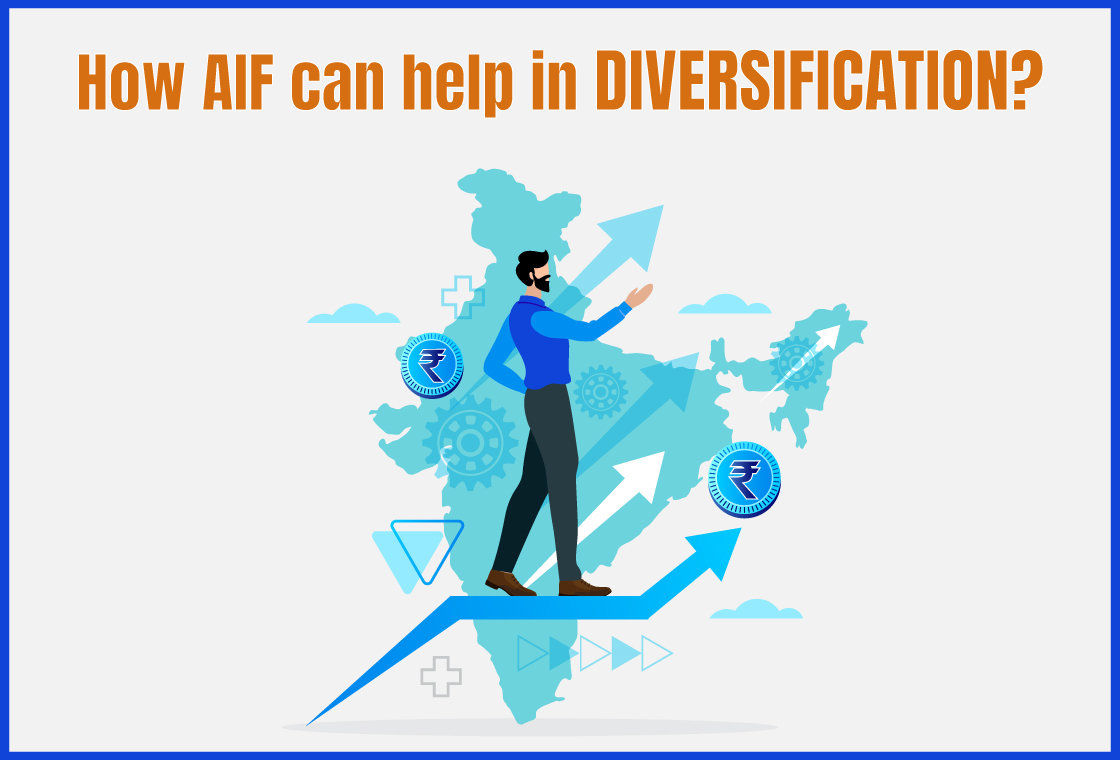PMS Bazaar conducted another exclusive episode of the Sundaram Alternate Series - Season 2 - Episode 9 - Catalysts for the Wealth Management Industry in India

Catalysts for the Wealth Management Industry in India by Mr. Vikaas M Sachdeva, Managing Director, Sundaram Alternate Assets and Vaatsal Tandon, Fund Manager, Sundaram Alternate Assets with Mr. Ganashyam, Managing Director & Co-CEO, Spark PWM
Excerpts from the Webinar
Mr. Vikas Sachdeva initiated the session by acknowledging Mr. Ganashyam’s renowned modesty and comfort within his professional sphere. He Highlighted Mr. Ganashyam's distinguished career, spanning prestigious institutions, and his role in shaping Indian Wealth management Industry. He then posed the foundational question: what profound insights and transformative lessons had shaped his approach to wealth management for high-net-worth and ultra-high-net-worth individuals?
Key aspects covered in this webinar blog are:
- Key Learnings: Navigating Outcome, Uncertainty, and Process
- Adapting to Generational Shifts and Modern Asset Allocation
- The Evolving Wealth Management Landscape: Banks vs. Boutique Firms
- The Boutique Advantage and Spark's Growth: A Case Study in Dynamic Wealth Management
- The Evolving Role of Family Offices and the Rise of New-Age Entrepreneurs
- Asset Allocation and Future Trends
- The Rise of Alternative Assets: A Growing Trend
- Co-Investment Trends and Wealth Manager Roles
- The Right to Win: Challenges and Opportunities in Wealth Management
- Evolving Dynamics of Wealth Management
- Global Equity Allocation: Navigating Constraints and Opportunities
- Identifying Disruptive Trends: Compensation and Client Alignment
Key Learnings: Navigating Outcome, Uncertainty, and Process
Mr. Ganashyam, with characteristic humility, attributed his experience to his long tenure and the fortunate opportunity to witness the industry’s rapid evolution. He acknowledged the valuable, albeit sometimes costly, lessons learned and the importance of received wisdom. He emphasized the profession's inherent outcome orientation, highlighting the significant responsibility to manage expectations and deliver tangible results.
Mr. Ganashyam then addressed the inherent tension between short-term pressures and long-term objectives, acknowledging the need to validate long-term strategies with regular assessments. He also touched upon the difference between wealth management as a profession and as a business. Mr. Ganashyam, with his CFA background, emphasized process-driven decision-making and the need for adaptability. He underscored the belief that process shapes outcomes, illustrating this with market prices reflecting diverse expectations. Mr. Ganashyam concluded this segment by acknowledging the potential dangers of excessive conviction and advocated for open-mindedness and humility in receiving and adopting new ideas, recognizing continuous innovation.
Adapting to Generational Shifts and Modern Asset Allocation
Mr. Sachdeva shifted the focus to the increasing market noise and the difficulty in distinguishing between noise and perception, especially with generational shifts. He questioned what wealth managers needed to unlearn to remain relevant. Mr. Ganashyam acknowledged the next generation’s influence but maintained the value of traditional asset allocation. He advocated for self-profiling and comfortable time frameworks, demystifying strategic asset allocation. He recognized the inevitability of mistakes and the need for calibration. Mr. Ganashyam illustrated his point using public equities, recommending a blend of passive, semi-active, and active management products. He concluded that traditional asset allocation remains relevant but needs to be blended with dynamic approaches, a process applicable to fixed income and alternatives.
The Evolving Wealth Management Landscape: Banks vs. Boutique Firms
Mr. Sachdeva noted the changing landscape, with the rise of boutique specialists and new-age platforms alongside traditional banks. He inquired about their competitive advantages and future trajectory. Mr. Ganashyam highlighted the solidity and scalability of traditional institutions, particularly large commercial and investment banks. He emphasized their focus on process, risk, and control. He acknowledged the emergence of successful boutique firms, attributing their success to long-standing client relationships, a solutions-oriented approach, and a comprehensive understanding of client requirements. Mr. Ganashyam noted that boutique firms extend beyond core wealth management to adjacent areas like investment banking and legacy planning. He concluded that both traditional and boutique models have a place in the future, with traditional institutions re-engineering themselves and boutique firms continuing to grow in their niche.
The Boutique Advantage and Spark's Growth: A Case Study in Dynamic Wealth Management
Mr. Ganashyam elaborated on the distinct advantages of boutique wealth management firms, emphasizing their ability to "combine the solidity which large formats have" with the "entrepreneurial energy, the agility, and the solution-orientedness of an emerging company." He attributed this unique blend to the professionals within these firms, many of whom possess extensive experience in larger institutions, enabling them to understand and implement robust processes, scale operations, and manage risk effectively. Simultaneously, they adopt a dynamic, client-focused approach, moving beyond traditional product-centric models to deliver tailored solutions.
Addressing about his experience at Spark, Mr. Ganashyam detailed the firm's journey, tracing its origins to a boutique firm founded 20 years ago by successful professionals, rooted in investment banking and driven by "intellectual rigor and research." This foundation enabled Spark to establish a strong reputation among entrepreneurs and investors, particularly in understanding business growth and private markets. The firm expanded into institutional equities, achieving top rankings in equity research. Subsequently, they integrated these strengths into asset management, finding success in private credit and private equity.
Approximately a year and a half prior to the interview, Spark made a strategic decision to significantly focus on wealth management, committing substantial investments. Mr. Ganashyam revealed that the team had grown to over 400 people across multiple locations in India and Benefiting from Favorable market conditions, Spark's assets under management grew to nearly 30,000 crores within a year and a half itself.
The Evolving Role of Family Offices and the Rise of New-Age Entrepreneurs
The conversation then shifted to the evolving role of family offices, particularly multi-family offices (MFOs). Mr. Ganashyam noted the "stupendous growth" in the number of family offices in India, driven by the professionalization and institutionalization of family-owned businesses. These families are focusing on "perpetuity for both the family and for the business," implementing structures like family councils and constitutions.
MFOs deliver value in four broad areas: investment management, estate planning, taxation, and ancillary services. He also predicted that MFOs would continue to build domain capabilities and eventually "attaining an institutional character" and becoming "investment firms in their own right."
The conversation then turned to the investment and risk appetite of first-generation wealth creators. Mr. Ganashyam described these individuals as "extraordinarily competent, talented, high-energy individuals" who have successfully built and scaled businesses. They are "very short on time," viewing money as an outcome. They are "very mentoring" and "love to support new ideas and ventures" backing them with both time and capital.
Asset Allocation and Future Trends
Mr. Vaatsal Tandon then steered the conversation towards alternatives asset allocation, inquiring about Mr. Ganashyam's views on allocating assets in private equity, private debt, venture capital, and real estate, given the considerable "dry powder" and family office interest in these areas. He asked how Mr. Ganashyam saw the alternative investment universe shaping up over the next five to ten years.
Mr. Ganashyam's response to this, and the subsequent discussion, would delve into the specifics of alternative asset allocation, providing further insights into the evolving wealth management landscape, and the increasing usage of alternative assets by the new generation of wealth creators
The Rise of Alternative Assets: A Growing Trend
Mr. Sachdeva then shifted the focus to alternative asset allocation, inquiring about Mr. Ganashyam's perspective on the increasing interest and investment from family offices in private equity, private debt, venture capital, and real estate. He asked Mr. Ganashyam to share his insights on the shaping of alternative asset universe and its trajectory over the next five to ten years.
In response Mr. Ganashyam highlighted the significant growth of the alternative investment fund (AIF) industry in India, noting its substantial size and comparing it to the mutual fund industry. He also referenced international data, citing a survey of global family offices that revealed an average allocation of 45% to alternative assets, with private equity being a particularly popular choice.
He then addressed the allocation of alternative assets in Indian portfolios, noting that while the initial rule of thumb was 10-15%, he now sees allocations of 20-30%, or even a third, across various products and managers.
Co-Investment Trends and Wealth Manager Roles
Mr. Vatsal Tandon then asked about the increasing trend of family offices seeking co-investment partnerships and active roles in investment decisions. Mr. Ganashyam acknowledged this as a very active area of interest. He then explained Spark's approach, which involves embedding an investment banking team within the wealth management outfit to source, diligence, curate, and place direct deals. He outlined the types of clients who would benefit from funds versus direct deals, noting that larger family offices require support in areas like governance, assessment, and exit strategies.
He emphasized the role of wealth managers in providing transaction advisory support and leveraging their strengths in sourcing and diligence of deals, particularly for large family offices.
The Right to Win: Challenges and Opportunities in Wealth Management
Mr. Sachdeva then shifted the conversation to audience questions, specifically addressing a query about the "right to win" in wealth management business and the competitive scenario. Mr. Ganashyam acknowledged the challenges of navigating a volatile environment and the need to provide insightful recommendations to clients. He also emphasized the industry's shift from product selling to solution selling and the importance of offering a broad range of services, including estate planning and taxation.
Mr. Ganashyam stressed the critical role of technology, particularly AI, in meeting the demands of younger clients and hyper-personalizing services. He discussed the need for relationship managers to demystify AI-driven insights and place them in the context of client preferences.
He concluded that organizations, whether boutique or large, that can combine breadth and depth of services, leverage technology, and move beyond templated business models will have a greater "right to win."
Evolving Dynamics of Wealth Management
Mr. Vikaas Sachdeva then recounted a conversation with a senior industry figure, who described wealth managers as exceptionally intelligent, both temperamentally and intellectually, stemmed from the wealth manager's need to balance the client's broad financial knowledge with the manufacturer's specialized product expertise. Mr. Sachdeva expressed his agreement with this sentiment, stating that the "right to win" in the industry often begins with the "right to survive," a sentiment Mr. Ganashyam echoed, acknowledging it as a daily concern.
Global Equity Allocation: Navigating Constraints and Opportunities
Mr. Sachdeva then addressed a question regarding global equity allocation. Mr. Ganashyam acknowledged the limitations imposed on mutual funds for overseas allocations and suggested the Liberalised Remittance Scheme (LRS) route as a viable starting point. While maintaining a strong "home country bias" Mr. Ganashyam stressed the importance of dollar or foreign currency diversification. He recommended utilizing platforms that offer depleted solutions initially, gradually increasing allocations as the corpus grows.
Identifying Disruptive Trends: Compensation and Client Alignment
For a question about a major, yet under-discussed, disruption in the Indian wealth management space, Mr. Ganashyam identified the regulator's move towards linking wealth manager compensation to asset retention on a trial basis as a significant disruptor. He argued that this shift has sanitized the industry, promoting portfolio-oriented, solution-driven models over product-selling. He also highlighted its positive impact on clients, as advice now focuses on asset allocation and long-term investment horizons. He deemed this compensation model a sustainable and impactful change, benefiting both clients and advisors.
Mr. Sachdeva concluded the session by thanking Mr. Ganashyam for the valuable insights shared regarding the transformation of wealth management industry and its catalysts in India.
Get access to rich data and analytics of PMS & AIF by subscribing to us. Join the 75000+ investors & experts: Subscribe NOW
Recent Blogs
.jpg)
Passively Active Investing — A Modern Investor’s Lens on ETF-Based PMS
PMS Bazaar recently organized a webinar titled “Passively Active Investing — A Modern Investor’s Lens on ETF-Based PMS,” which featured Mr. Karan Bhatia, Co-Founder and Co-Fund Manager , Pricebridge Honeycomb ETF PMs. This blog covers the important points shared in this insightful webinar.

Spot the Trouble: Red Flags in Equity Investment Analysis
PMS Bazaar recently organized a webinar titled “Spot the Trouble: Red Flags in Equity Investment Analysis,” which featured Mr. Arpit Shah, Co-Founder & Director, Care Portfolio Managers. This blog covers the important points shared in this insightful webinar.

Long-Only AIFs Rebound Sharply in October; Long-Short Strategies Lag Despite Lower Volatility
106 long-only AIFs averaged 3.68% vs 32 long-short AIFs at 2.7%; only 24–31% of funds beat key indices

Markets log strongest monthly gains in 7 months; PMS performance turns near-uniform in October
Nifty 50 TRI gained 4.62%, BSE 500 TRI rose 4.27%; 415 of 427 equity PMSes ended positive

How SMEs are Shaping India’s Investment Landscape?
PMS Bazaar recently organized a webinar titled “How SMEs are Shaping India’s Investment Landscape?” which featured Mr. Shrikant Goyal, Fund Manager, GetFive Opportunity Fund.

Stable Income from Indian REITs and InvITs
PMS Bazaar recently organized a webinar titled “Stable Income from Indian REITs and InvITs,” which featured Mr. Rahul Jain, Head of Public Markets, Alt.

5 Key Considerations Before Investing in AIFs in India
Alternative Investment Funds (AIFs) have emerged as a compelling option for sophisticated investors seeking diversification and potentially superior returns. But venturing into AIFs requires a clear understanding of their unique characteristics that go beyond simply knowing what they are and their categories.

How AIF can help in diversification?
Traditionally, Indian investors have relied on a mix of stocks and bonds to build their wealth. While this approach offers diversification, it can still leave your portfolio vulnerable to market fluctuations. Enter Alternative Investment Funds (AIFs), a dynamic asset class gaining traction for its ability to unlock diversification beyond the realm of conventional options.

